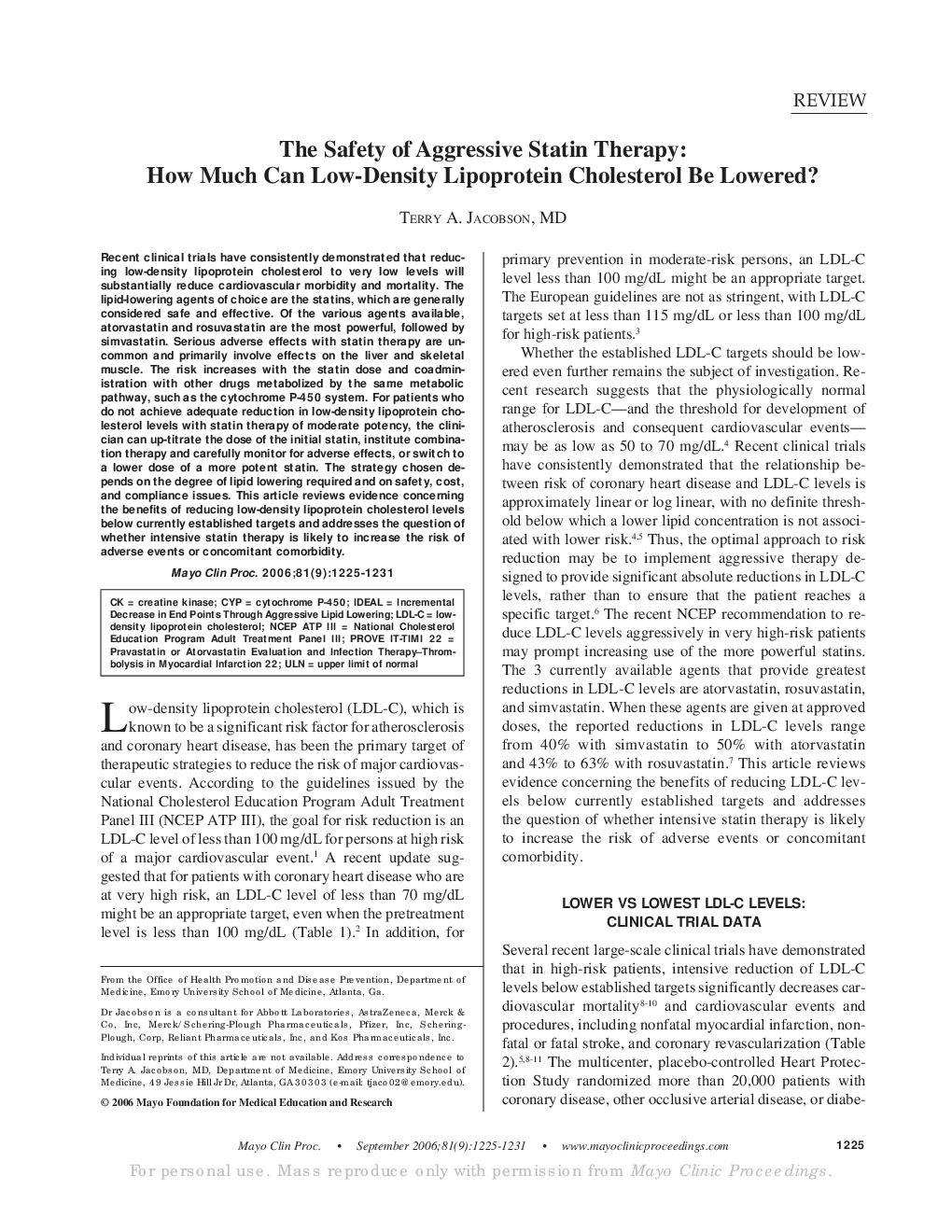| کد مقاله | کد نشریه | سال انتشار | مقاله انگلیسی | نسخه تمام متن |
|---|---|---|---|---|
| 3001173 | 1180372 | 2006 | 7 صفحه PDF | دانلود رایگان |
عنوان انگلیسی مقاله ISI
The Safety of Aggressive Statin Therapy: How Much Can Low-Density Lipoprotein Cholesterol Be Lowered?
دانلود مقاله + سفارش ترجمه
دانلود مقاله ISI انگلیسی
رایگان برای ایرانیان
کلمات کلیدی
CyPLDL-CULNPROVE IT-TIMI 22NCEP ATP III - NCEP ATP 3Ideal - ایده آلNational Cholesterol Education Program Adult Treatment Panel III - برنامه آموزش کلسترول ملی بالغ درمان بزرگسالانUpper limit of normal - حد بالای طبیعیcytochrome P-450 - سیتوکروم P-450Creatine kinase - کراتین کینازLow-density lipoprotein cholesterol - کلسترول لیپوپروتئین با چگالی کم
موضوعات مرتبط
علوم پزشکی و سلامت
پزشکی و دندانپزشکی
کاردیولوژی و پزشکی قلب و عروق
پیش نمایش صفحه اول مقاله

چکیده انگلیسی
Recent clinical trials have consistently demonstrated that reducing low-density lipoprotein cholesterol to very low levels will substantially reduce cardiovascular morbidity and mortality. The lipid-lowering agents of choice are the statins, which are generally considered safe and effective. Of the various agents available, atorvastatin and rosuvastatin are the most powerful, followed by simvastatin. Serious adverse effects with statin therapy are uncommon and primarily involve effects on the liver and skeletal muscle. The risk increases with the statin dose and coadministration with other drugs metabolized by the same metabolic pathway, such as the cytochrome P-450 system. For patients who do not achieve adequate reduction in low-density lipoprotein cholesterol levels with statin therapy of moderate potency, the clinician can up-titrate the dose of the initial statin, institute combination therapy and carefully monitor for adverse effects, or switch to a lower dose of a more potent statin. The strategy chosen depends on the degree of lipid lowering required and on safety, cost, and compliance issues. This article reviews evidence concerning the benefits of reducing low-density lipoprotein cholesterol levels below currently established targets and addresses the question of whether intensive statin therapy is likely to increase the risk of adverse events or concomitant comorbidity.
ناشر
Database: Elsevier - ScienceDirect (ساینس دایرکت)
Journal: Mayo Clinic Proceedings - Volume 81, Issue 9, September 2006, Pages 1225-1231
Journal: Mayo Clinic Proceedings - Volume 81, Issue 9, September 2006, Pages 1225-1231
نویسندگان
Terry A. MD,